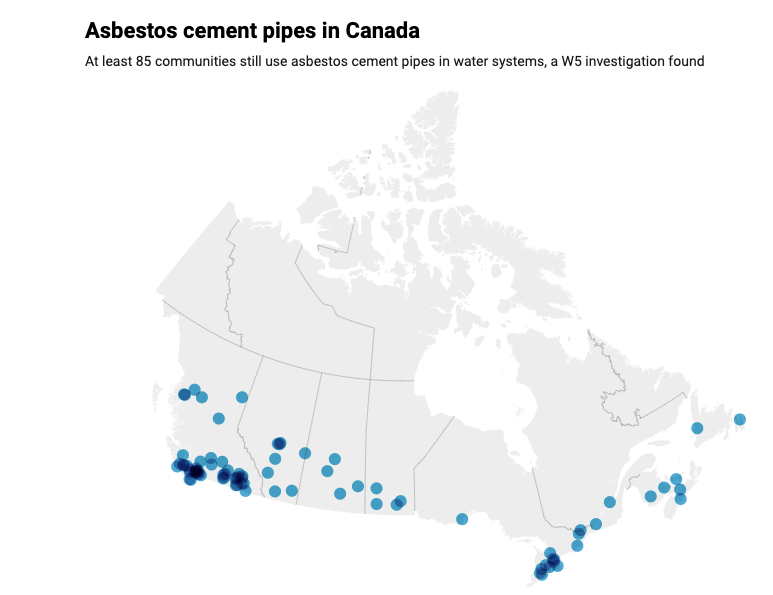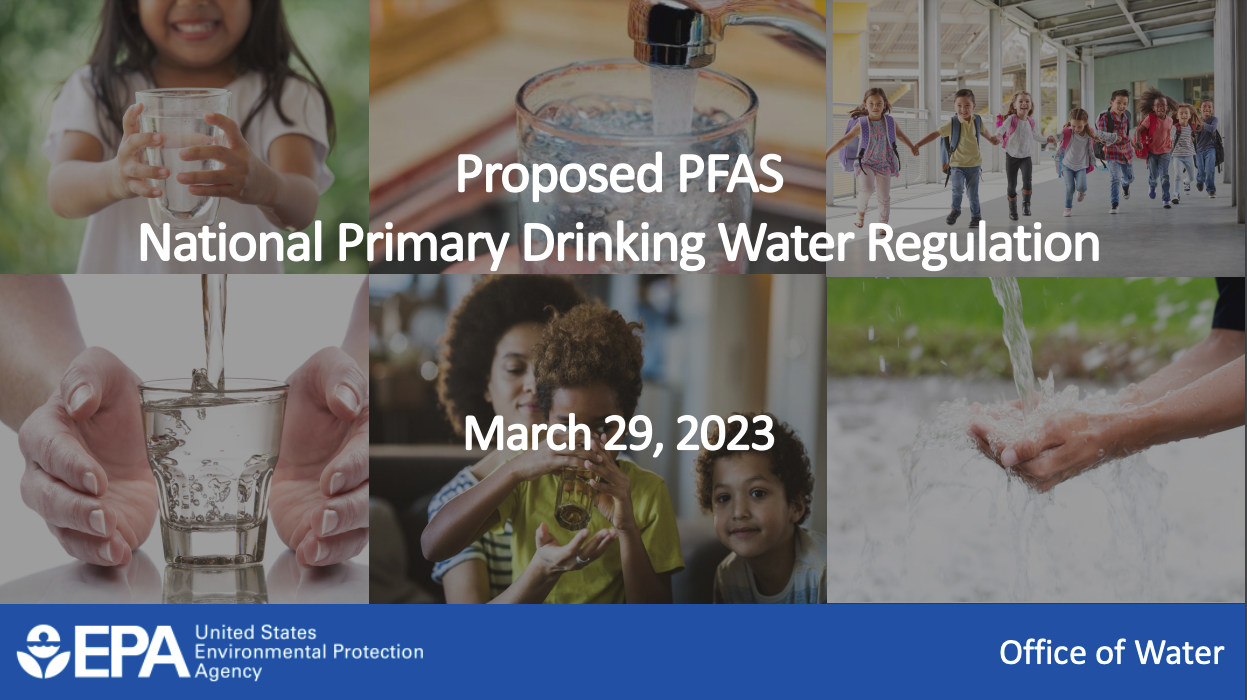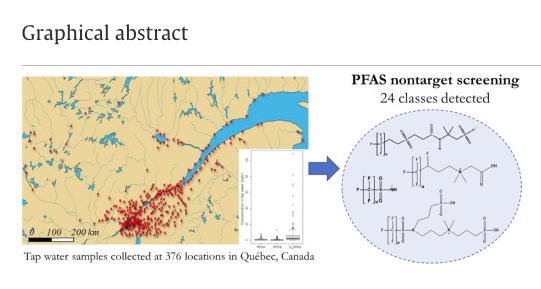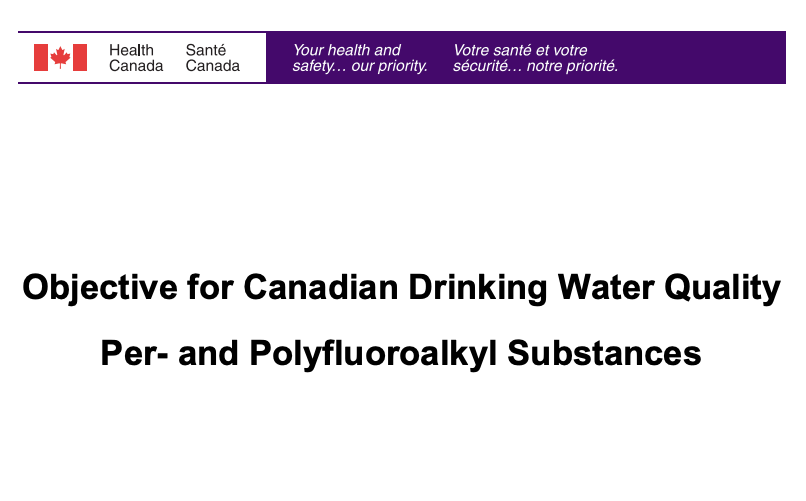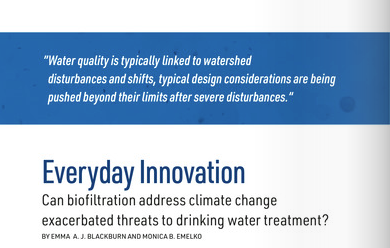Latest Publications
Praesent lectus leo, convallis id neque nec, ultrices euismod nibh. Sed ac rhoncus quam. Fusce tristique tellus diam, vel porta eros iaculis vitae.
Hidden danger: Is there asbestos in your drinking water, and how could it get there?
The USEPA National Primary Drinking Water Regulations currently regulate asbestos with an established a maximum contaminant level (MCL) for asbestos in drinking water of 7 MFL (million fibers per liter > 10 µm in length).
The importance of collaborative research for Young Professionals
Lauren McGregor, researcher who is part of the WaterSTP group, shares how her Master’s research focused on biofiltration of wildfire-impacted water was improved by the collaborations that resulted from her participation in the forWater Network, an affiliated Network of the WaterSTP research group.
USEPA is proposing a National Primary Drinking Water Regulation for six PFAS in drinking water
“EPA is proposing a National Primary Drinking Water Regulation (NPDWR) to establish legally enforceable levels, called Maximum Contaminant Levels (MCLs), for six PFAS in drinking water. PFOA and PFOS as individual contaminants, and PFHxS, PFNA, PFBS, and HFPO-DA (commonly referred to as GenX Chemicals) as a PFAS mixture.
Target and Nontarget Screening of PFAS in Drinking Water for a Large-Scale Survey in Québec
Tap water samples were analyzed for 42 PFAS in 376 municipalities within 17 administrative regions in Quebec and it was found that 99.3% of the tap water samples were positive for at least one PFAS.
Draft objective for per- and polyfluoroalkyl substances in Canadian drinking water
Health Canada is proposing an objective of 30 ng/L for the sum of total per- and polyfluoroalkyl substances (PFAS) detected in drinking water. Total is defined by a couple of USEPA methods or a method that can detect at least 18 PFAS. Also of note is that they state “For the purposes of this proposed objective, a result of non-detect is considered to have a value of zero.”
Water Canada Magazine features new WaterSTP research
Emma Blackburn, PhD Candidate & Monica Emelko, Scientific Director of the WaterSTP group, share insights into new research focused on biofiltration in the latest Water Canada Magazine issue.
In The Press
Praesent lectus leo, convallis id neque nec, ultrices euismod nibh. Sed ac rhoncus quam. Fusce tristique tellus diam, vel porta eros iaculis vitae.
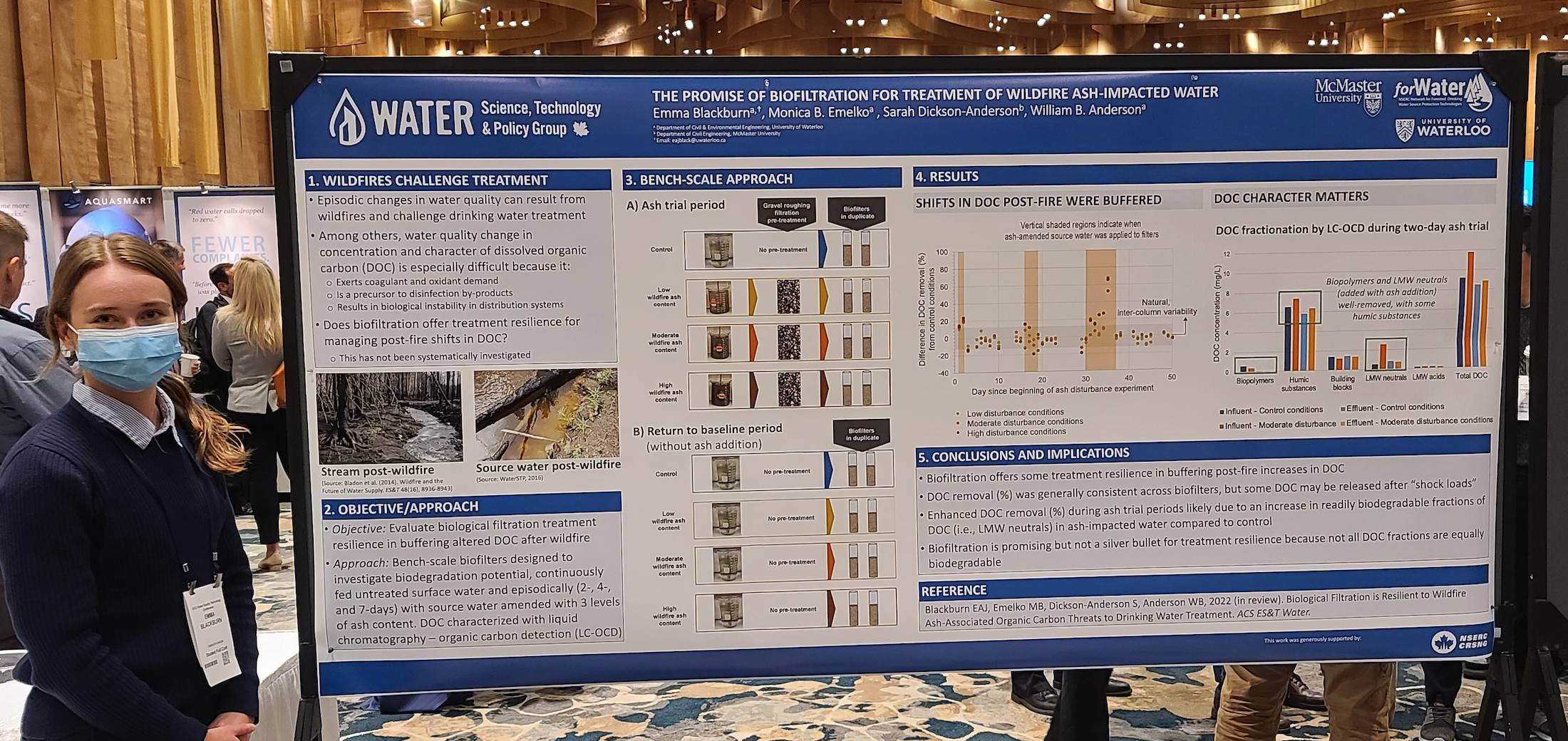
Emma Blackburn, PhD Student wins third-place at WQTC Conference
Emma Blackburn, PhD Student with the WaterSTP group, received the third-place poster award in the Student Poster Competition, where graduate students involved in water technology research from around the world presented their work.

Taylor Lynn Virgin – Alumni Gold Medal Award
Alumni Gold Medal recipients are selected on recommendation from the Dean of a Faculty or the Dean of Graduate Studies to recognize the outstanding academic achievement of graduating students.
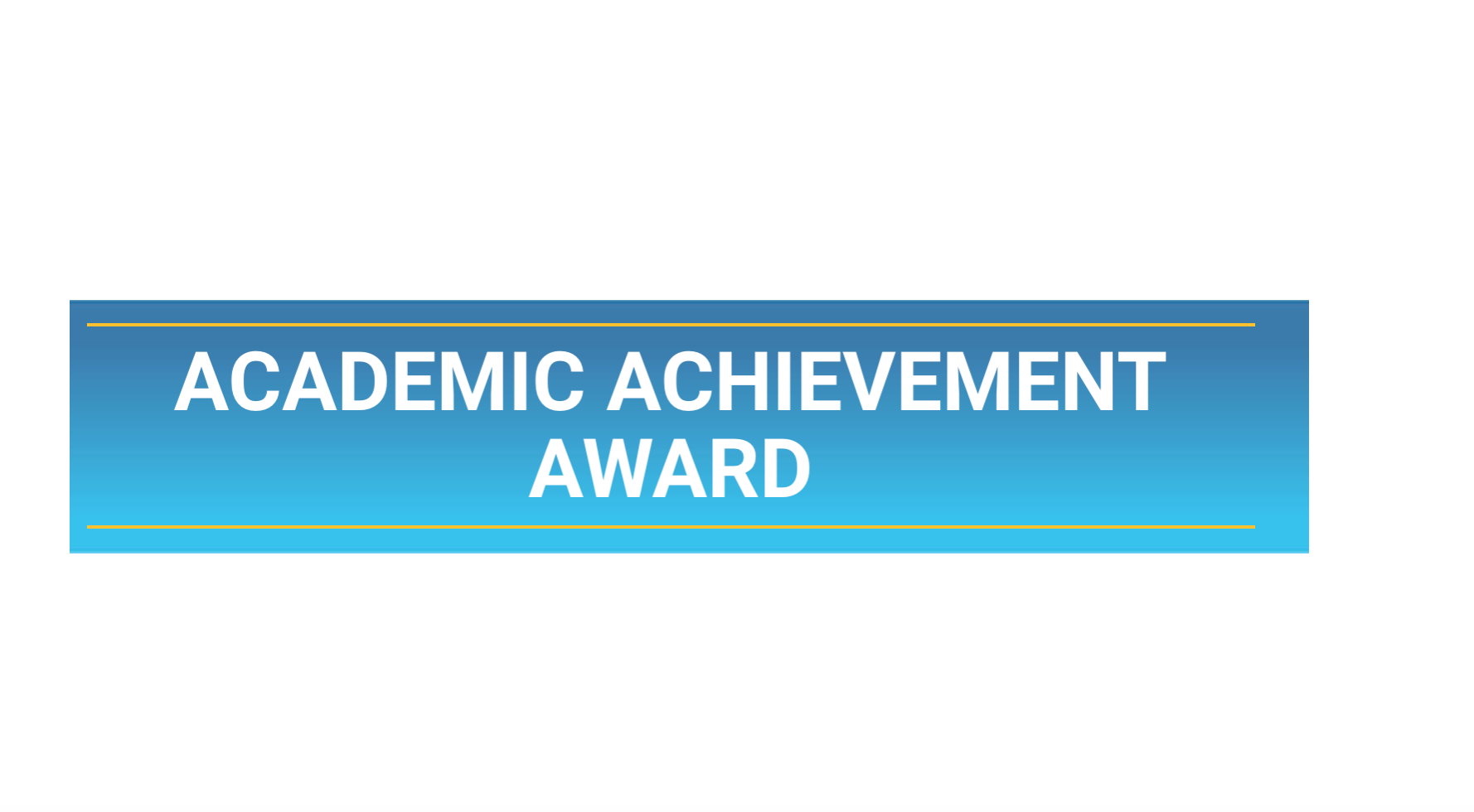
Three University of Waterloo graduates receive top awards for environmental engineering research
Kelsey Kundert, Senior Project Process Engineer at the City of Calgary, and Nik Knezic, current PhD candidate at the University of Waterloo, won first and second place in the American Water Works Association Academic Achievement Awards for best Master’s thesis.

Interdisciplinary Centre on Climate Change (IC3) appoints three new associate directors
Monica Emelko appointed as Associate Director of Climate risk, resilience, and adaptation for the Interdisciplinary Centre on Climate Change (IC3)
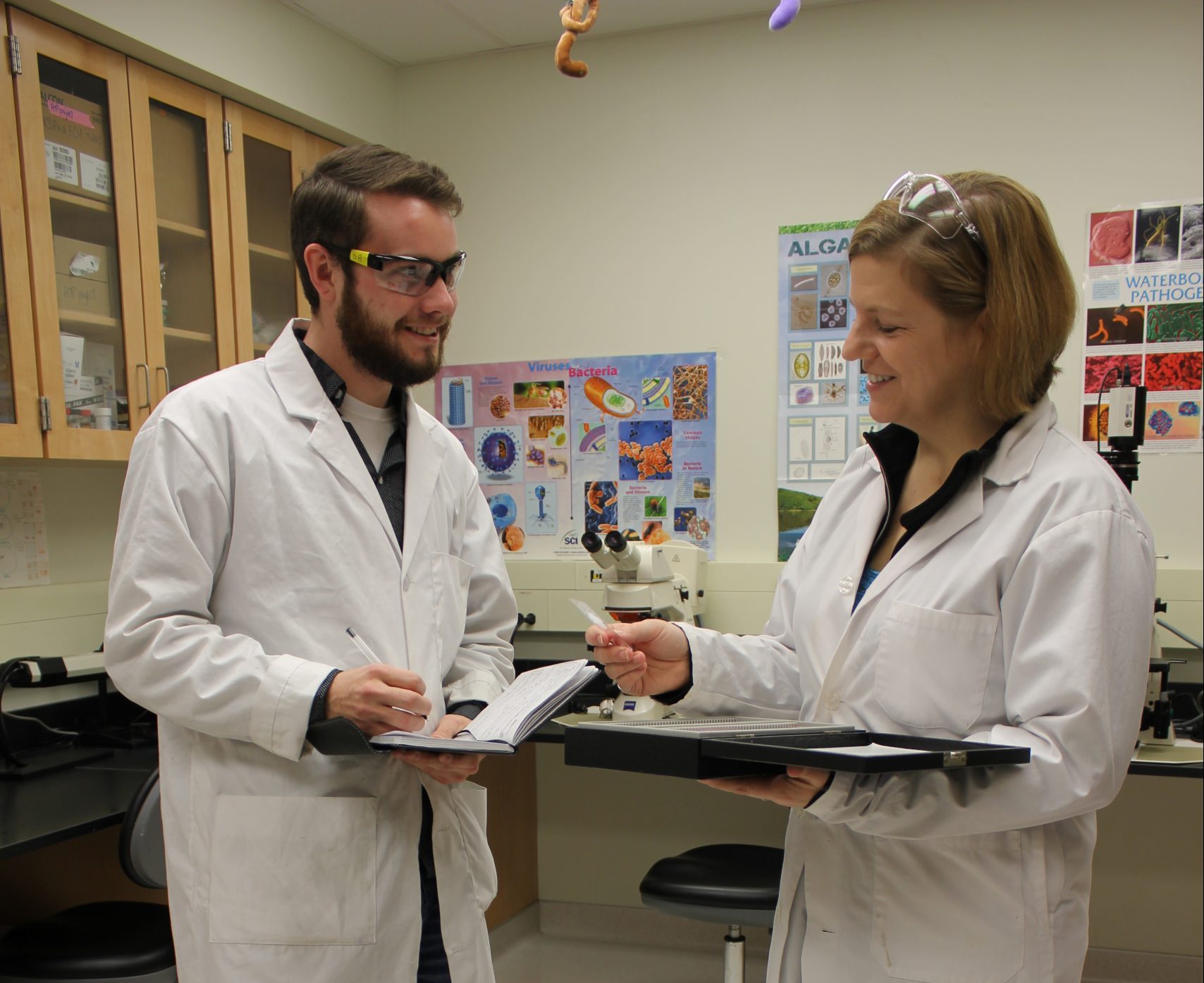
Monica Emelko recognized with the Faculty of Engineering Award of Excellence in Graduate Supervision
Monica Emelko recognized with the Faculty of Engineering Award of Excellence in Graduate Supervision
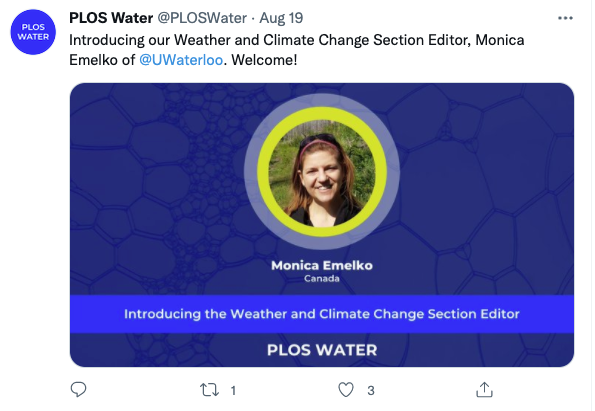
Monica Emelko named Climate Change section editor at PLOS Water
Monica Emelko shares insight into the water quality issues that arise after a wildfire.

Monica Emelko interviewed by Capital Current on water quality impacted by wildfires
Monica Emelko shares insight into the water quality issues that arise after a wildfire.
On-Going Research
Praesent lectus leo, convallis id neque nec, ultrices euismod nibh. Sed ac rhoncus quam. Fusce tristique tellus diam, vel porta eros iaculis vitae.
Hidden danger: Is there asbestos in your drinking water, and how could it get there?
The USEPA National Primary Drinking Water Regulations currently regulate asbestos with an established a maximum contaminant level (MCL) for asbestos in drinking water of 7 MFL (million fibers per liter > 10 µm in length).
The importance of collaborative research for Young Professionals
Lauren McGregor, researcher who is part of the WaterSTP group, shares how her Master’s research focused on biofiltration of wildfire-impacted water was improved by the collaborations that resulted from her participation in the forWater Network, an affiliated Network of the WaterSTP research group.
USEPA is proposing a National Primary Drinking Water Regulation for six PFAS in drinking water
“EPA is proposing a National Primary Drinking Water Regulation (NPDWR) to establish legally enforceable levels, called Maximum Contaminant Levels (MCLs), for six PFAS in drinking water. PFOA and PFOS as individual contaminants, and PFHxS, PFNA, PFBS, and HFPO-DA (commonly referred to as GenX Chemicals) as a PFAS mixture.
Target and Nontarget Screening of PFAS in Drinking Water for a Large-Scale Survey in Québec
Tap water samples were analyzed for 42 PFAS in 376 municipalities within 17 administrative regions in Quebec and it was found that 99.3% of the tap water samples were positive for at least one PFAS.
Draft objective for per- and polyfluoroalkyl substances in Canadian drinking water
Health Canada is proposing an objective of 30 ng/L for the sum of total per- and polyfluoroalkyl substances (PFAS) detected in drinking water. Total is defined by a couple of USEPA methods or a method that can detect at least 18 PFAS. Also of note is that they state “For the purposes of this proposed objective, a result of non-detect is considered to have a value of zero.”
Water Canada Magazine features new WaterSTP research
Emma Blackburn, PhD Candidate & Monica Emelko, Scientific Director of the WaterSTP group, share insights into new research focused on biofiltration in the latest Water Canada Magazine issue.
Discover The Future
We are a multi-disciplinary laboratory committed to focussed and efficient drug discovery

